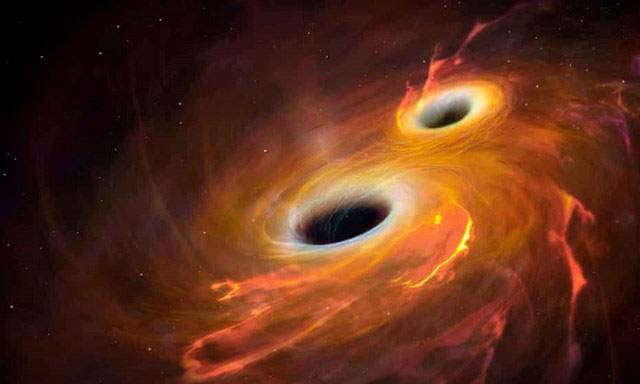Gravitational waves: The 'landscape' changer of cosmic evolution
An international team of scientists has made 35 new observations of gravitational waves, bringing the total number of detections since 2015 to 90. Gravitational waves are undulating fluctuations caused by the curvature of a structure. space-time, created by large astronomical events such as the collision between pairs of black holes - billions of light-years away from our Earth.
The first detection of gravitational waves, published in 2016, proved the prediction Albert Einstein made a century ago was correct based on his theory of relativity.
Monash University researcher Shanika Galaudage, an Australian branch collaborator on the OzGrav project, describes gravitational waves as a "new window into the universe", carrying a mission that could change the "game changer". ".
'Gravitation waves are not electromagnetic light. We can see things that are not visible, such as binary black hole mergers," Galaudage said.
Of the 35 new discoveries, up to 32 are evaluated as the result of merging black hole pairs. Other notable discoveries include two pairs of massive black holes orbiting each other - one weighing 145 times the mass of the Sun and the other 112 times heavier. The scientists also discovered a pair of somewhat "lighter" black holes with a total mass just 18 times that of the Sun.

An illustration of two black holes orbiting each other. (Photo by The Guardian).
Two of the 35 discoveries are thought to originate from a neutron star merging with a black hole. Research associate Professor Susan Scott, of the Australian National University, said that neutron stars are small but extremely dense objects: despite being about 1.4 times the mass of the Sun. , but they are about the size of a city, with a radius of approximately 15 km. The series of discoveries has helped scientists understand both the evolution of the universe and the nature of stars, said Scott.
Ms. Scott said the number of recent discoveries has increased 10 times compared to the time when the Ligo and Virgo projects were first launched to observe gravitational waves. She attributes this increase to changes in specialized devices, such as improvements in laser power.
Ms Scott said: 'After improving the detectors to become more sensitive, we will be able to see all the binary black hole pairs merging in the entire universe. Neutron stars when they collide do not produce gravitational waves as strong as black holes because they are not as dense, and therefore, we cannot see them from a distance."
In the future, astronomers may also be able to detect gravitational waves from stars as they become supernovas. "This will help us understand how stars form as they end their life cycles and run out of fuel, explode and then collapse," said Ms Scott.
However, some new findings are still unanswered mysteries. The researchers believe that the 35th event could be a pair of black holes or a merger between a black hole and a neutron star. The lighter object in this case has a mass greater than normal for a neutron star, but less than the mass of a black hole.
- Explain fascinating waves with comics and cartoons
- Simple understanding of cosmic black holes and gravitational waves
- Mysterious gravitational waves in the atmosphere
- Special points of gravitational waves
- Gravitational waves: The 100-year journey finds evidence for Einstein's prediction
- People can create gravitational waves
- Gravitational waves continue to be discovered after the collision of two black holes
- Gravity waves - Mystery 100 years about to be discovered
- Strange source of air emits gravitational waves in the universe
- Detecting new gravitational waves from two colliding black holes
- Einstein was not the first to discuss gravitational waves
- The second time to detect gravitational waves
 Van Allen's belt and evidence that the Apollo 11 mission to the Moon was myth
Van Allen's belt and evidence that the Apollo 11 mission to the Moon was myth The levels of civilization in the universe (Kardashev scale)
The levels of civilization in the universe (Kardashev scale) Today Mars, the sun and the Earth are aligned
Today Mars, the sun and the Earth are aligned The Amazon owner announced a secret plan to build a space base for thousands of people
The Amazon owner announced a secret plan to build a space base for thousands of people